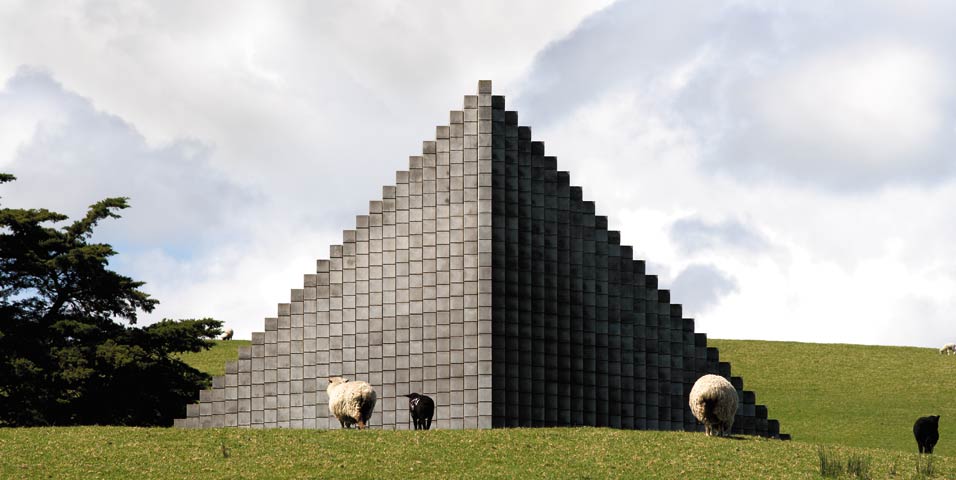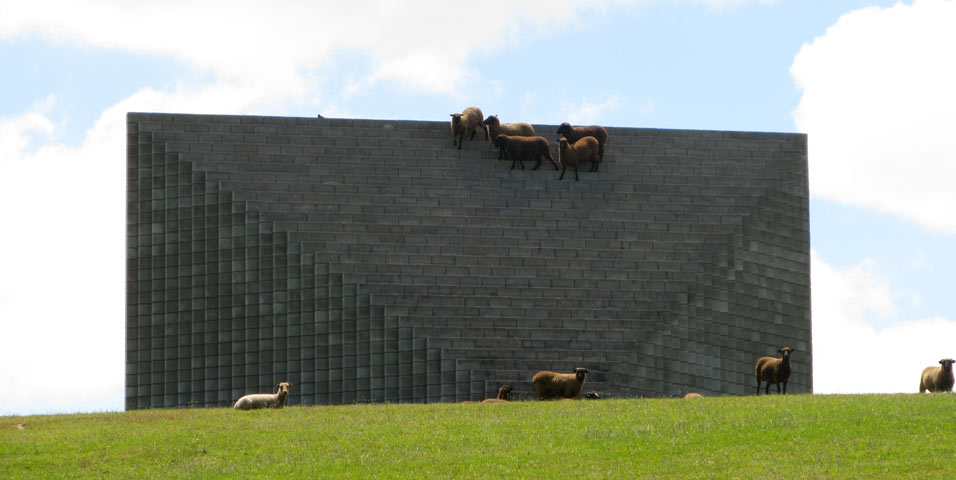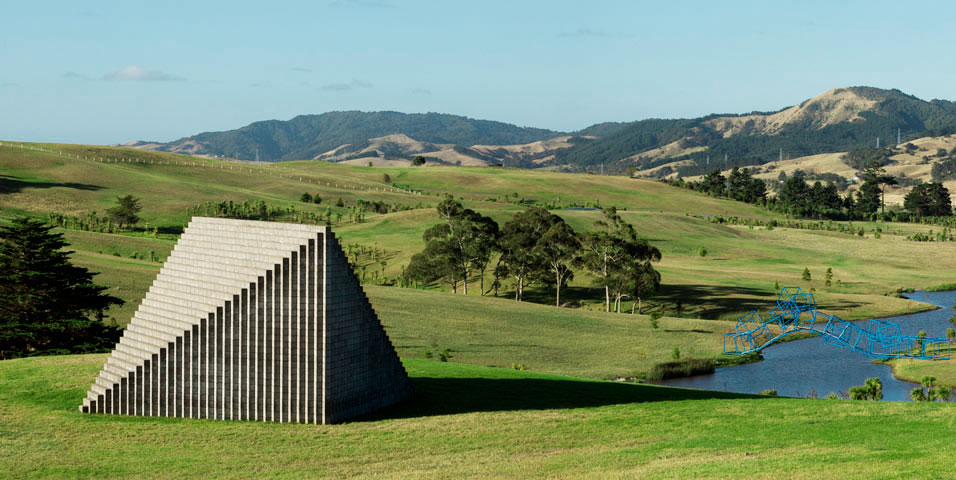© Gibbs Farm 2013

LeWitt’s distinctive concrete block works, which first appeared in 1985, are at once sculpture, monument and architecture. A leading figure in the history of Minimalism and then Conceptualism, LeWitt was intrigued by the various modular permutations possible through the repetitious use of the simple cube form.
The minimalist aesthetic of the monumental Gibbs Farm work’s lies in various intriguing paradoxes: it is comprised of many small units (the concrete blocks) and yet it is a single form (the pyramid); it is conceptually simple but perceptually complex; and while it is unequivocally sculpture, its scale and form are highly suggestive of architecture.
Sculptor, painter and printmaker, Sol LeWitt (1928-2007) is regarded as one of the American founders of both Minimalism and Conceptualism and rose to fame in the late 1960s with his wall drawings and "structures" (a term he preferred instead of "sculptures"). He studied at Syracuse University, New York, served in the US Army
in Japan and Korea; attended the Cartoonists and Illustrators School in New York; and early in his carer worked as a graphic designer for the architect I M Pei. His prolific two and three-dimensional work ranges from wall drawings (over 1200 of which have been executed) to hundreds of works on paper extending to structures in
the form of towers, pyramids, geometric forms, and progressions. Comprehensive retrospectives have been presented at the Museum of Modern Art, New York, the San Francisco Museum of Modern Art, the Museum of Contemporary Art in Chicago and the Whitney Museum of American Art, New York.
Pyramid (Keystone NZ)
1997
Standard concrete blocks
7.75 x 16 x 16m
1997
Standard concrete blocks
7.75 x 16 x 16m



